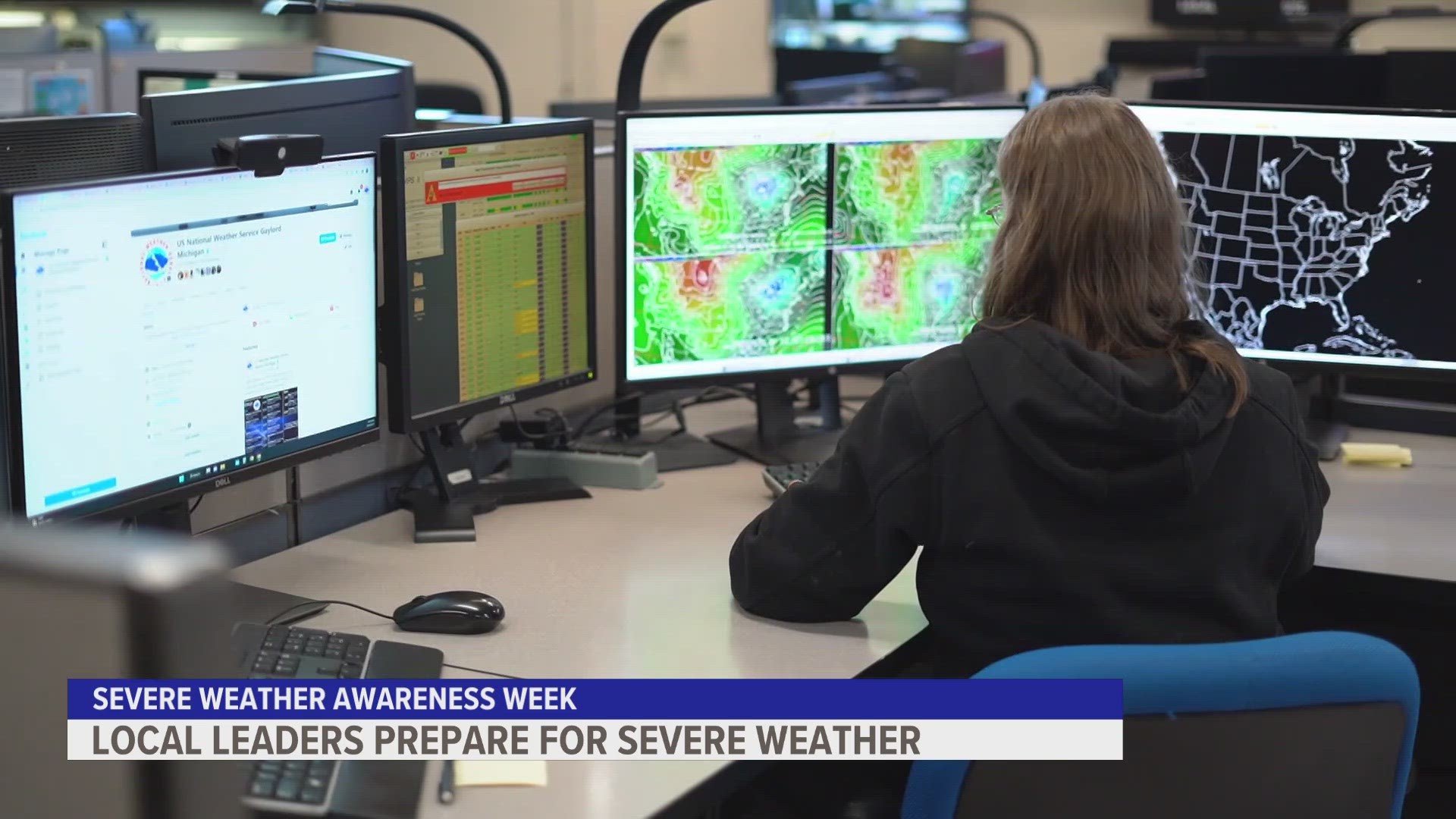MICHIGAN, USA — Severe weather preparedness begins well before any potential thunderstorm arrives. It’s key to keep individuals, families, and communities safe from severe weather.
“It’s really about being prepared, being aware, and having a plan,” said Jim Maczko. Maczko is a meteorologist at the National Weather Service of Grand Rapids office.
Simple actions you can take to be prepared include having an NOAA weather radio, an emergency kit in your house, and at least a three-day supply of water and non-perishable food.
While meteorologists stress preparedness to individuals, how do community officials prepare? And should West Michigan feel confident in their readiness during the worst of Mother Nature?
Emergency managers use knowledge from past events to mold readiness for the future.
“Trying to prevent yesterday’s emergencies or the emergencies that we know about and can predict, try to prevent those from becoming tomorrow’s disasters,” said Matt Groesser, Kent County’s Emergency Management Coordinator.
For Groesser, communication is the most adequate way to be prepared.
“We try to know what is headed our way as early as possible, so that we can in turn, take that information and provide the public with some useful guidance, or instructions on what they should be doing to prepare,” Groesser explained.
This wouldn’t be possible without a streamline between emergency managers and local meteorologists.
“We have just a fantastic relationship with the Grand Rapids office of the National Weather Service,” Groesser said.
“The National Weather Service works in partnership with emergency management to when the weather gets here, we provide weather warnings, and on-the-spot forecasts for emergency management, so they can take their action plans and help their communities get to safety as quickly as possible,” Maczko remarked.
Forecasts are initially briefed three to upwards of seven days to emergency managers and other outlets before a severe weather event arrives. Information becomes clearer and more precise, allowing emergency managers to take the adequate next step.
“Many of us are in a chat program that we kind of share with them and broadcast meteorologists,” Groesser explained. “So we’re seeing live time information as it’s coming across. And that gives us an opportunity to make informed decisions.”
Readiness allows for swift action between multiple organizations during severe weather and the immediate moments following.
“So one of the first things that we do is we try to assess the damage, what has occurred, how bad is it? What resources are going to be required to handle it? Any of those entities that would be called upon to respond in the event of some type of local emergency or disaster,” Groesser remarked.
Confidence in preparation and resultant action is telling.
“The community’s emergency management, the partnership is very strong, from local to state to federal to tribal level with the National Weather Service,” Maczko said. “It’s very important in the months and years before weather that connection between Weather Service and emergency management.”
“Not only do you get weather warnings from the weather service, but many communities have local notification systems, weather sirens, and other means to communicate hazardous weather that is in place well before the weather gets here,” Maczko furthered.
“We’ve got a good cohesion between the different response disciplines. Here in Kent County, certainty, but the region as well. I have a very high level of confidence that those agencies will be there in our time of need,” Groesser said.
It circles back to all of us understanding Mother Nature’s worst moments.
“I think a message to the public is that community preparedness starts with the individual, you have to make sure that you have that resilience first, before we are able to truly be a resilient community,” Groesser said.
►Make it easy to keep up to date with more stories like this. Download the 13 ON YOUR SIDE app now.
Have a news tip? Email news@13onyourside.com, visit our Facebook page or Twitter. Subscribe to our YouTube channel.

